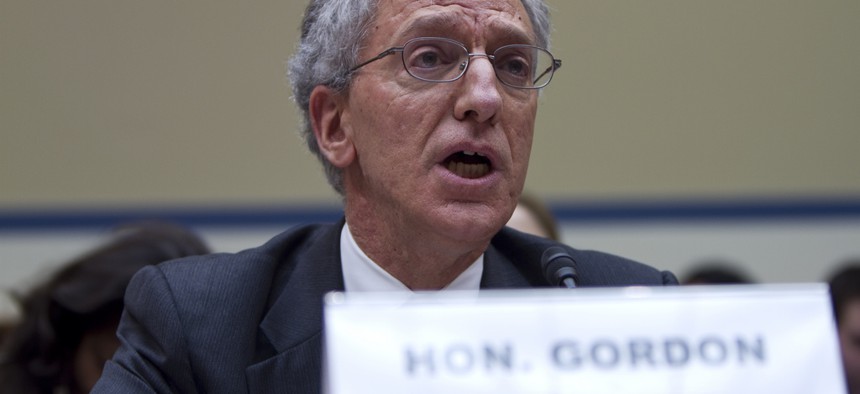
Former Obama administration head of the Office of Federal Procurement Policy Dan Gordon said, "Between approximately 99.3 percent and 99.5 percent of procurements were not protested." Committee On Oversight & Government Reform file photo
Bid Protests Are Worth Their Costs, Ex-Procurement Chief Says
Dan Gordon’s study rebuts critics who say contractors exploit the process.
Contractors on the losing side of a competitive bidding who protest to the Government Accountability Office do not hurt or game the procurement system as some critics allege, says a forthcoming study.
The percentage of contracts that spark protests is also comparatively small, while the overall impact of the protest procedure is healthy, according to Dan Gordon, the former Obama administration head of the Office of Federal Procurement Policy and now associate dean for government procurement law studies at George Washington University Law School.
In an article set for publication this spring in the Public Contract Law Journal, a copy of which was provided to Government Executive, Gordon wrote that “there exist a number of misperceptions concerning bid protest statistics that deserve attention, because these misperceptions can taint judgments about the benefits and costs of protests. In particular, even people quite familiar with the federal acquisition system often believe that protests are more common than they really are, and they believe, inaccurately, that protesters use the protest process as a business tactic to obtain contracts from the government.”
Gordon traces the history of bid protests back to the building of the Panama Canal and the use of GAO as an arbiter since the 1920s. The process has also been adapted by governments around the world.
Because of the difficulty of knowing precisely how many contracts the federal government awards each year, the reports of protest to GAO -- which reported 2,353 in fiscal 2011 -- are actually overstated, Gordon says. “Between approximately 99.3 percent and 99.5 percent of procurements were not protested,” even though the trend since the 1990s has been upward. That’s because of increases in procurement spending, the article says.
“It is, of course, true that very high-dollar procurements are much more likely to be protested: the higher the dollar value, the greater the likelihood of a protest,” he said. “For a company that loses the competition for a $100 million contract, with all the bid and proposal costs that competing entails, the additional cost of filing a protest may seem minimal, so that filing a protest can be very tempting.”
Of protests making it through the full GAO process in fiscal 2010, only a handful succeeded in winning the contract, according to Gordon’s calculations.
Overall, Gordon finds the bid protest process to be positive for the procurement system, citing several advantages:
- Protests introduce a relatively low-cost form of accountability into acquisition systems by providing disgruntled participants a forum for airing their complaints;
- They can increase potential bidders’ confidence in the integrity of the procurement process if the GAO is directly responsive to participants’ complaints, leading more players to participate;
- Protests can increase the public’s confidence in the integrity of the public procurement process; --The known availability of the protest avenue empowers those in contracting agencies who face pressure to act improperly;
- Protest decisions made public provide a high level of transparency into what is happening in the federal procurement system; and
- Protests provide guidance.
“Any corporate counsel who follows GAO bid protest decisions,” Gordon said, “knows how strictly the GAO applies the `late is late’ rule, so that counsel will ensure that their client appreciates the importance of submitting bids on time.”







